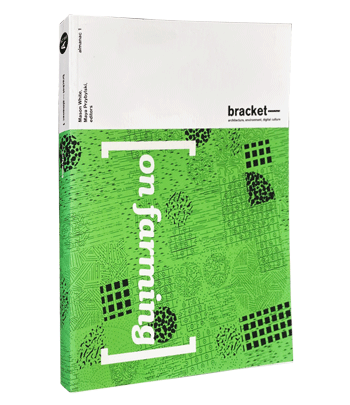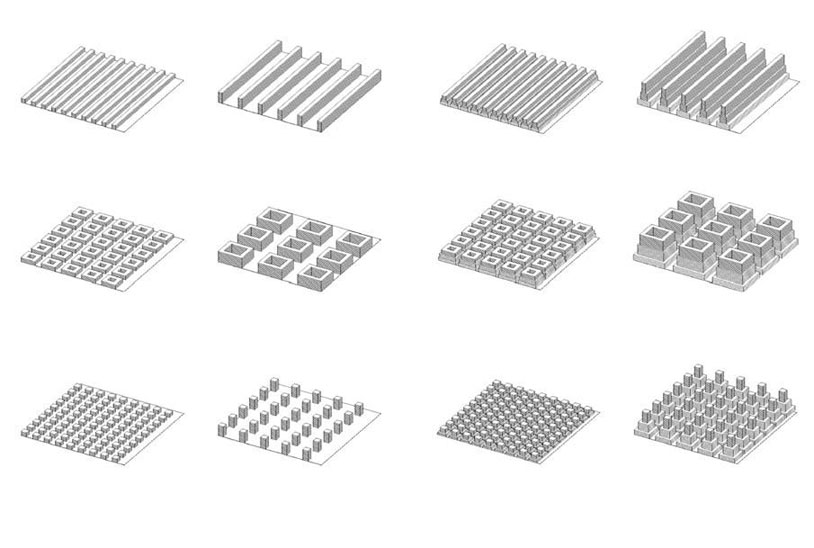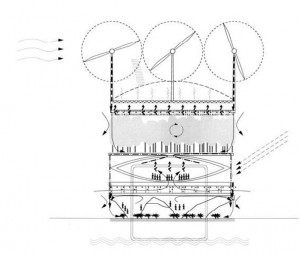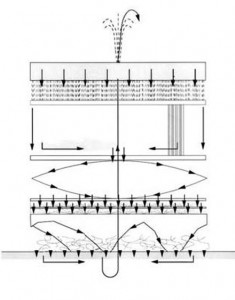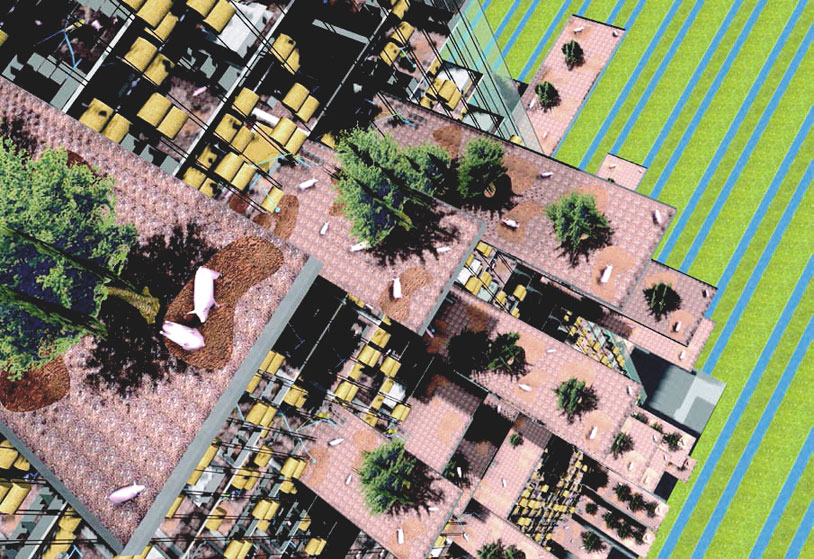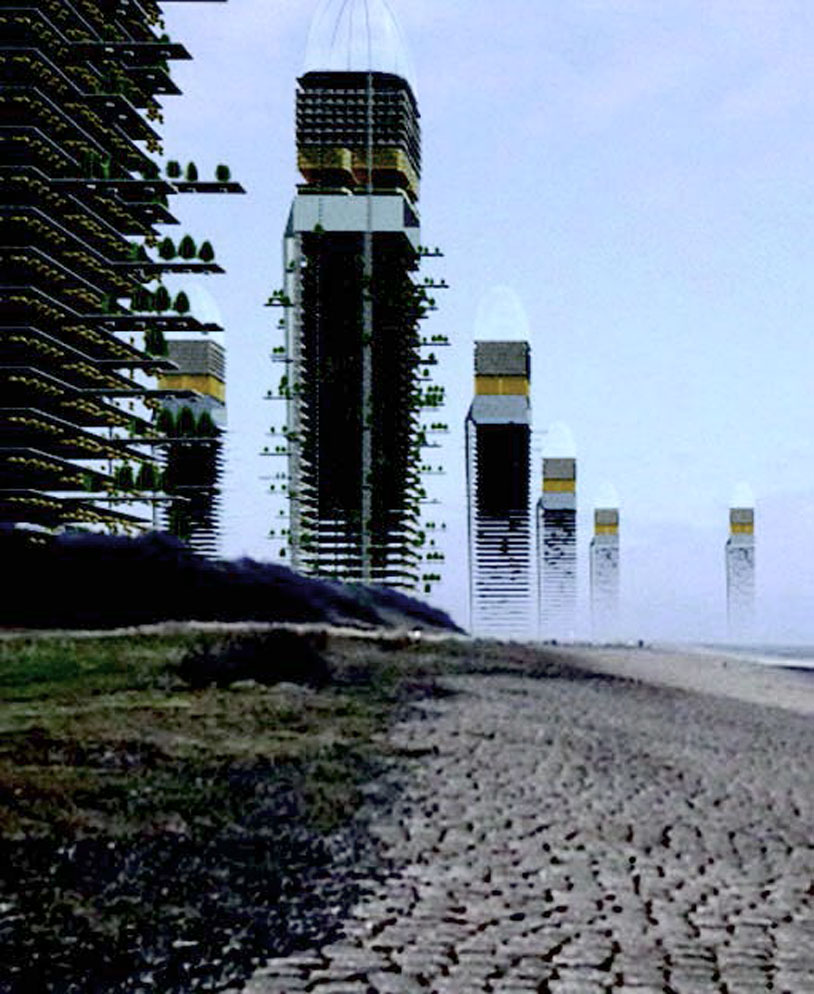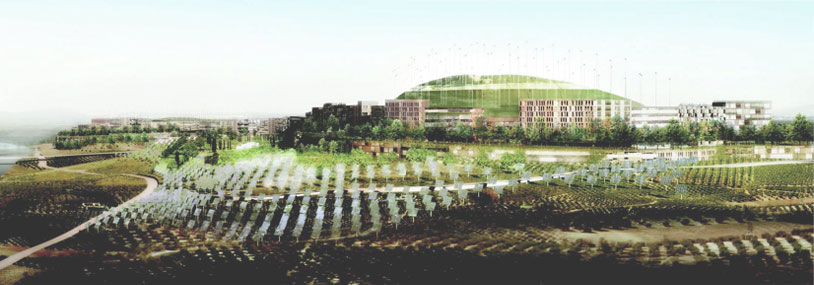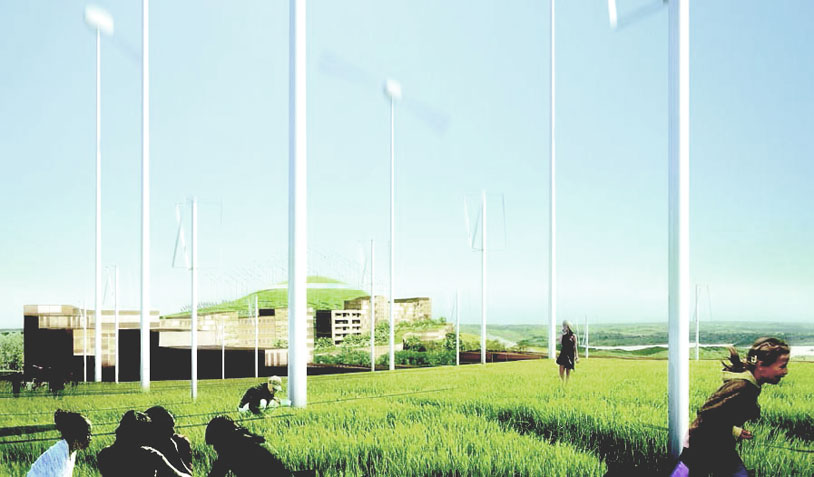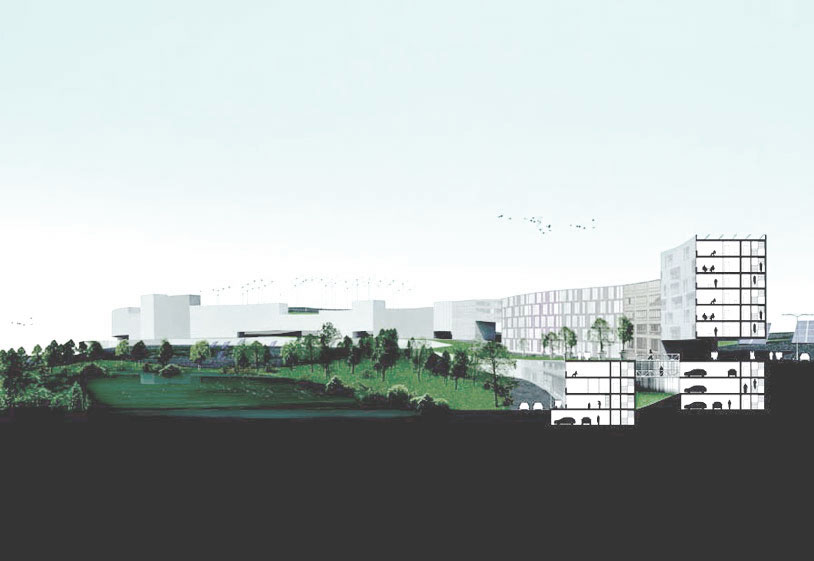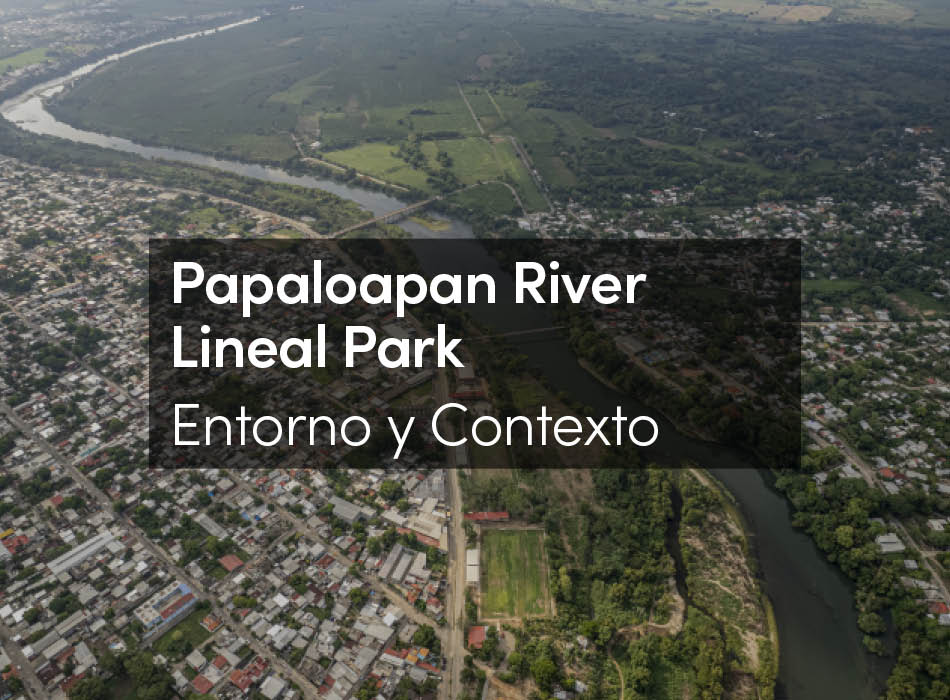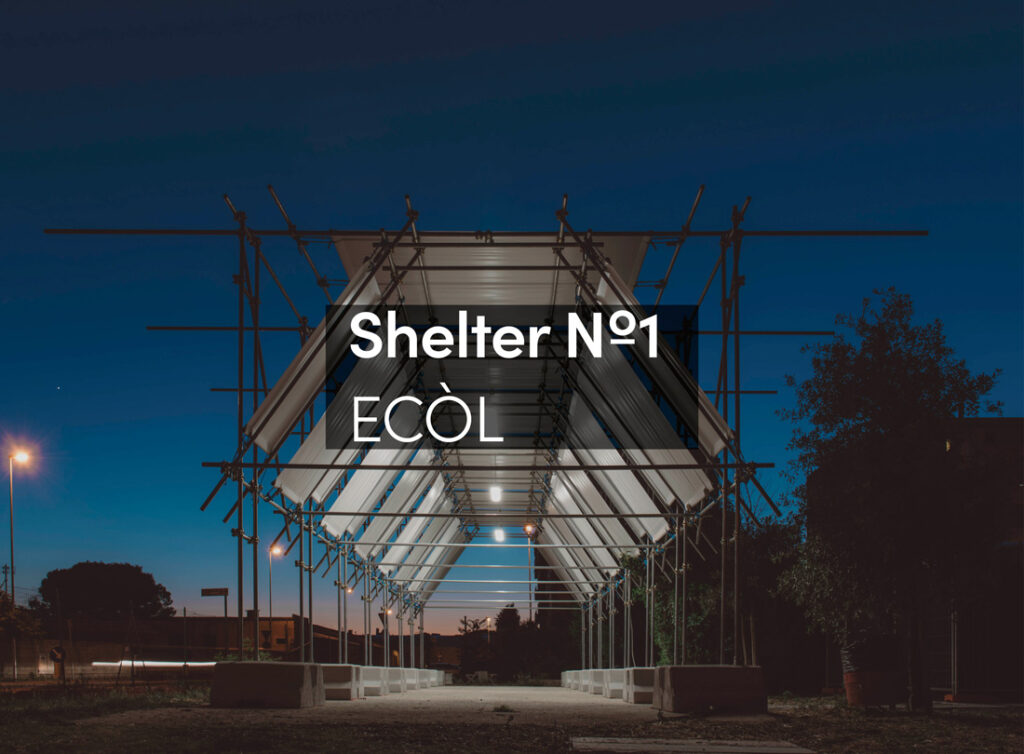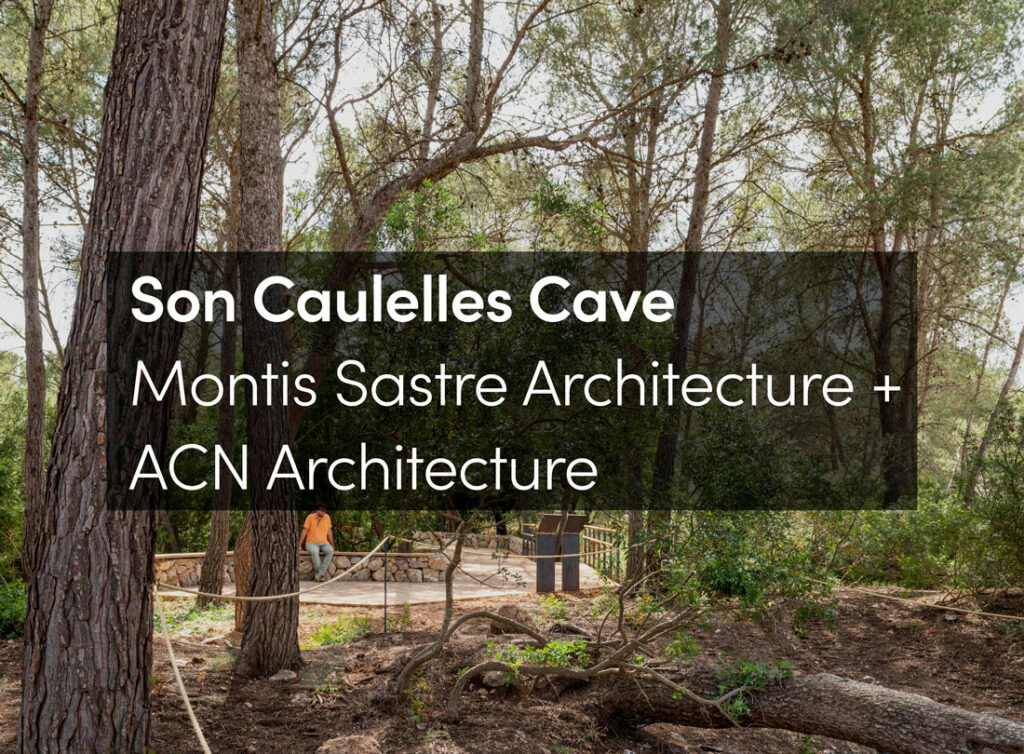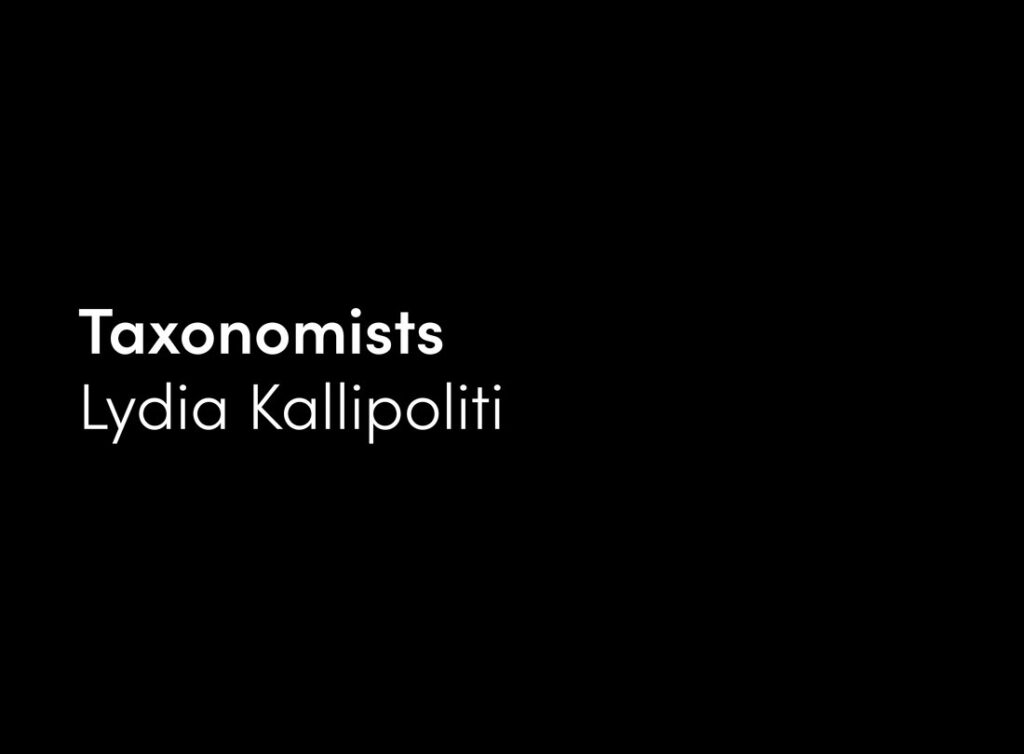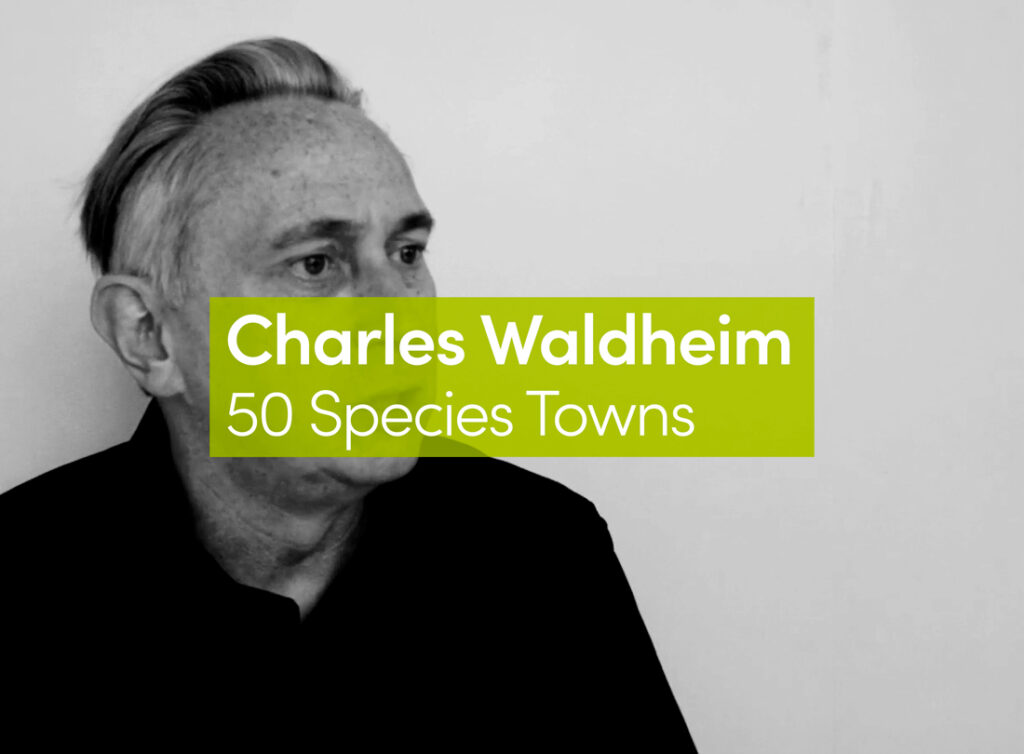In recent decades, we have become more and more aware of the fact that our way of living has a substantial ecological footprint. At some point in the 19th century we lost our “CO2- innocence,” as the German philosopher Peter Sloterdijk recently stated. We are using more space than the earth is able to provide. We know now that everything we do and produce requires space, including compensation for losses. We know we can calculate how many “earths” we would need based on our current lifestyle. Since we consume too much anyway, we have to decide either to reduce the consumption, or use the earth’s surface more efficiently. The latter could be considered as farming. Instead of only consuming “less” we can still have some of “more.”
Function Mixing. Effective zoning and function mixing can save space, and efficient stacking of functions allows for a better three-dimensional use of space.
Row houses|5 floors|24m in-between distance
Row houses|13 floors|62m in-between distance
Row houses|L-shaped pyramid|10 floors|9m in-between distance
Row houses|26 floors|27m in-between distance
Blocks|5 floors|24m in-between distance (x-dir)|19m in-between distance (y-dir)
Blocks|13 floors|62m in-between distance (x-dir)|50m in-between distance (y-dir)
Blocks|Block pyramid|10 floors|9m in-between distance (x-dir)|4.2m in-between distance (y-dir)
Blocks|26 floors|32m in-between distance (x-dir)|20m in-between distance (y-dir)
Towers|5 floors|24m in-between distance (x-dir)|19m in-between distance (y-dir)
Towers|13 floors|62m in-between distance (x-dir)|50m in-between distance (y-dir)
Towers|Pyramid|10 floors|9m in-between distance (x-dir)|4.2m in-between distance (y-dir)
Towers|24 floors|22m in-between distance (x-dir)|10m in-between distance (y-dir)
In current times, nobody argues anymore the necessity to be more efficient and productive in for example, land use. But it is also no coincidence that in Europe the idea of urban farming has come up at the same time as the notion of shrinking cities. In North America, however, urban farming is rooted in the practice of producing your own food again, against the backdrop of poverty and an increasingly distanced relationship between people and food production.
In recent years, MVRDV has dealt with the other interpretation of farming, which is also discussed in this issue of Bracket. The Dutch are accustomed to having to create land, or polders, and to being highly productive per square meter in terms of land use or agriculture. In recent years, we have tried to be as efficient as possible with land use in urban planning and to always search for ways to make at least two uses of project sites, or try to find a way to compensate for any loss of open space. Effective zoning and function mixing can save space, and efficient stacking of functions allows for a better three-dimensional use of space. We still have not reached the limits of understanding how mixing functions can lead to integrative designs, where buildings produce cycles within themselves as with a heat exchanger or a heat pump.
Investigations into the double usage of land are also effective. For example, cars continue to occupy enormous amounts of space. Allowing cars to park in the street should be seen as outrageous as the fuel consumption of SUVs. It should be considered an obscene waste of space. But much of this has already begun to change. For example, cities promoting green roofs are now as common as cities promoting tourism.
Recently, more and more neighborhoods are being designed to produce their own energy by integrating renewable energy systems such as solar panels, solar boilers, and wind turbines that are placed on the rooftops or in the public realm. Also water remediation and purification can be integrated, which often comes with a considerable cost of usable space. But, the integration can also have a powerful effect on the inhabitants, who are then made aware of what it takes to produce clean water. These neighborhoods become sometimes so effective that they can even start their own energy company to sell off the surplus energy they have produced.
It would be interesting to see if we can broaden the roles of architects and urban designers from creating culturally and functionally good designs to making productive designs as well. Some of the previously mentioned qualities could be incorporated into briefs and, as necessary, into budgets. But it gets even more interesting in cases where the desired productivity is considered parallel with the design, as in agricultural aspects, life of plants and animals, floating and flying cities, or by using energy produced by humans through body heat, movements, and activity. The goal is to develop clever contemporary designs, in other words, a 21st-century ‘Frankfurter Küche.’
The most exciting designs are now being produced when so-called by-products can be harvested—–products or designs that are coincidentally related to the project, such as the possibility of generating energy on the same surface as another activity. Many of the projects and proposals in Bracket’s “On Farming” demonstrate this particular fascinating possibility of harvesting as it relates to architecture and urban design—–the beautiful inadvertent combinations of productive designs.
Expo 2000 Pavilion for the Netherlands, 2000. Energy use.
Windmills | air dome to protect against rain | condense cooling | water basin heat storage | electric light | air curtains and re-use of natural local air | floor heating with used air from the auditorium | heat generated by people photovoltaic sun curtains | natural air handling unit to control scent, temperature and moisture | biomass to produce energy | groundwater for cooling
Expo 2000 Pavilion for the Netherlands, 2000. Water circulation.
Fountain | collecting basin / hydrophite filter rain shower (colander) | water façade | mist | water cooling hall | toilet flushing irrigation | river streams / vegetation wall | plants “sponge” filter
Expo 2000 Pavilion for the Netherlands
Can increasing population density coexist with an increase in the quality of life? What should be the conditions and what role will nature play? This kind of effort can be the Netherlands’ specific contribution to the world fair, which seems to be devoted to a nostalgic glimpse of ecology.
The Dutch entry shows a mix of technology and nature, emphasizing nature’s producability and artificiality. It provides multi-level public space as an extension to existing public spaces—–a monumentalized multi-level park. This act of stacking saves space, energy, time, water, and infrastructure.
The Pig Towers allow for each pig to have access to outside space and fresh air by means of balconies.
Pig City
In 2000, pork was the most consumed form of meat at 80 billion kg/year. With a production of 16.5 million tons of pork, The Netherlands is the chief exporter of pork within the European Union. In 1999, 15.2 million pigs and 15.5 million humans officially inhabited The Netherlands. One pig needs an area of 664 m2, including current food processing. In the case of organic farming, pigs are fed with 100% grain, leading to a required 130% more field surface due to the reduced grain production. This would cause a demand of 1726 m2 per pig, including the organic food processing. This would mean that there would be only 774 m2 per person left for other activities. In other words, 75% of the Netherlands would be dedicated to pigs.
Vertical pig farms along Slufter Beach in the port of Rotterdam.
Pig Tower cross section.
Can we combine organic farming with a concentration of production-activities so that there will be space for other activities? Is it possible to collect all the pig production needs within concentrated farms, therefore avoiding unnecessary transportation and distribution, and subsequently reducing the spread of diseases?
While the building occupies only 10% of the entire site, the remaining open space becomes an ‘eco park.’ Photovoltaic cells are distributed across the park, generating energy for the 3000 apartments and reducing CO2 emissions by 6,000 tons per year.
Eco Ciudad Montecorvo Logroño
A medium sized city of approximately 130,000 inhabitants, Logroño is located in the wine region of La Rioja in the north of Spain. This proposal for an Eco City consists of approximately 3,000 social houses and complementary program—–such as schools, social buildings, sports facilities—–all developed in a sustainable way. By producing all the energy needed on site, the new neighborhood achieves a CO2 neutral footprint.
The 56 hectare site, just north of Logroño on the two small hills of Montecorvo and la Fonsalada, has considerable potential to create a new neighborhood. Besides the fact that the hills provide a beautiful view over the city, the slopes are orientated to the south, allowing for the convenient generation of solar energy. A tapestry of photovoltaic cells clad the mountain, as if the hills are covered in gold. On top of the hills, windmills are generating part of the energy needed for the housing units and at the same time serve as landmarks. 100% of the energy demand is generated on site by a combination of solar and wind energy. The development is designed in a compact way to minimize undesirable impact on the landscape. Only 10% of the site is occupied by buildings. The remaining space becomes a magnificent eco-park, a mix of landscape and energy production.
Wind turbines located on top of the hill help generate energy for the 3,000 apartments.
The linear compact urban development meanders through the landscape. By making use of the height differences, every apartment has a beautiful view over the city.
